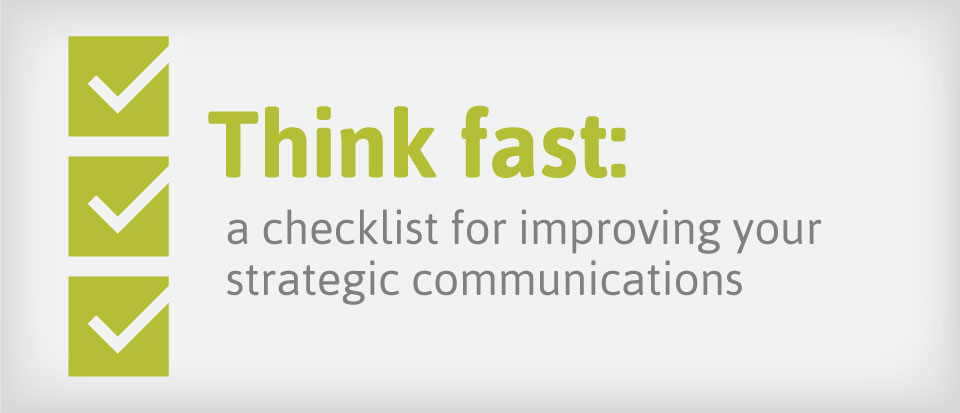From time to time, it’s good to step back and reflect on where you are, what you’re doing, and where you’re headed. That’s also true for internal and external communications. Of course, most of us are lucky to find the time to keep up with our emails and inboxes. But taking stock of where you are doesn’t have to be a drawn-out process. At RSW, we have a checklist that provides a snapshot of a company’s communication tactics, and how we can improve them.
What percentage of your existing communications pieces have a tangible metric that shows whether or not they’re working?
There are at least a dozen metrics that you can assign. For external communications, it may involve sales increases, lead generation, response rates, website hits, and so on. For internal communications, it may involve turnover rates, absenteeism, service scores, or specific operational goals. If you find that most of your communications have no tangible metric in place, you have a major — and very common — issue. Make it your goal to assign some form of metric to all of the internal and external communications pieces you produce.
What are your competitors doing differently?
Are they advertising more or less than previous years? Shifting their media budgets to other publications or outlets? Focusing on employee and sales force incentives? How do their online efforts stack up against yours? Some simple intelligence gathering can help you see exactly what they’re up to — and help you defuse a competitive threat before it does any damage.
Is your core message relevant and well-defined?
After a few years, two things can happen: Your message can become outdated, or you might find that your focus has shifted and your message is blurry and undefined. It’s a common occurrence, whether you’re speaking to customers, prospects, or employees. After years of having a message taken for granted, you find that all of your sales, marketing, and communication teams no longer have a unified voice when it comes to articulating what your company stands for and what value it provides to your customers.
Are you doing things because you really need to do them — or because they’ve ‘always been done that way’?
A lot of companies fall into this trap: “We’ve always gone to these four trade shows. We’ve always run in this publication. We’ve always had this website, this person in charge of this blog, and this quarterly incentive program.” Just because something has been done the same way for ten or twenty years doesn’t mean it’s bad. But it does mean that it probably hasn’t been examined. An annual review in which you put everything on the table for evaluation is something every marketing director should do.
Would you consider your current communications materials to be “best in class”? Are the communications materials that you use to reach your external and internal audiences clearer, more vivid, and more impactful than your nearest competitors’? Or do you sometimes feel that your materials blend in with the general landscape, and don’t really stand out enough to flag down your prospects? Do you feel that your materials cut through the clutter — or merely contribute to it?
With a little reflection and time, you can pinpoint specific areas for tactical improvement and make sure that everything is on track. So in between the conference calls, trade shows, email chains, and Facebook updates, take time to think fast. Then, take another minute to call RSW. You’ll be glad you did.





